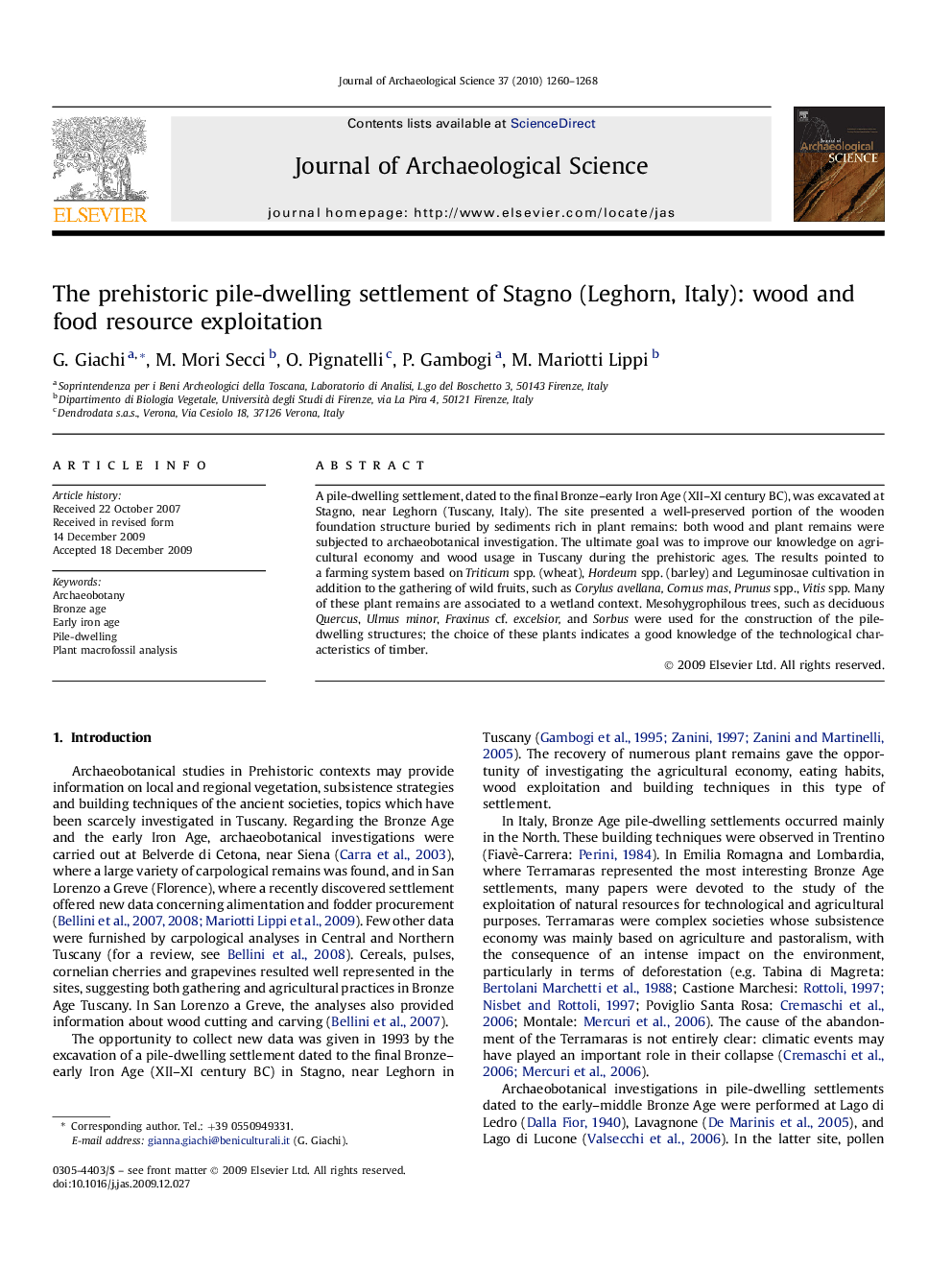| Article ID | Journal | Published Year | Pages | File Type |
|---|---|---|---|---|
| 1036750 | Journal of Archaeological Science | 2010 | 9 Pages |
A pile-dwelling settlement, dated to the final Bronze–early Iron Age (XII–XI century BC), was excavated at Stagno, near Leghorn (Tuscany, Italy). The site presented a well-preserved portion of the wooden foundation structure buried by sediments rich in plant remains: both wood and plant remains were subjected to archaeobotanical investigation. The ultimate goal was to improve our knowledge on agricultural economy and wood usage in Tuscany during the prehistoric ages. The results pointed to a farming system based on Triticum spp. (wheat), Hordeum spp. (barley) and Leguminosae cultivation in addition to the gathering of wild fruits, such as Corylus avellana, Cornus mas, Prunus spp., Vitis spp. Many of these plant remains are associated to a wetland context. Mesohygrophilous trees, such as deciduous Quercus, Ulmus minor, Fraxinus cf. excelsior, and Sorbus were used for the construction of the pile-dwelling structures; the choice of these plants indicates a good knowledge of the technological characteristics of timber.
